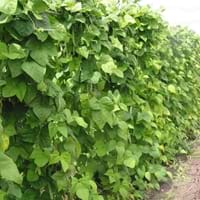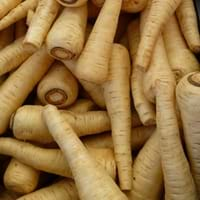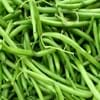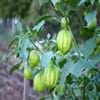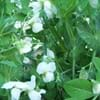Life Span
Annual
Biennial and Perennial
Origin
Central America, South America
Europe, Western Asia
Types
Black turtle
Cranberry
Flageolet
Kidney
Pea
Pinto
White
Not Available
Number of Varieties
Not Available
Habitat
Mixed deciduous forest, Well Drained
waste ground, wastelands
USDA Hardiness Zone
Not Available
4-9
AHS Heat Zone
Not Available
7-1
Sunset Zone
A1, A2, A3, H1, H2, 1a, 1b, 2a, 2b, 3a, 3b, 4, 5, 6, 7, 8, 9, 10, 11, 12, 13, 14, 15, 16, 17, 18, 19, 20, 21, 22, 23, 24
A1, A2, A3, H1, H2, 1a, 1b, 2a, 2b, 3a, 3b, 4, 5, 6, 7, 8, 9, 10, 11, 12, 13, 14, 15, 16, 17, 18, 19, 20, 21, 22, 23, 24
Habit
Cushion/Mound-forming
Rosette/Stemless
Flower Color Modifier
Bicolor
Bicolor
Fruit Color
Green
Brown, Black
Leaf Color in Spring
Green
Green
Leaf Color in Summer
Green
Green
Leaf Color in Fall
Green
Green
Leaf Color in Winter
Green
Not Available
Leaf Shape
Acuminate
Pinnate
Plant Season
Spring, Summer, Fall
Summer
Sunlight
Full Sun
Full Sun
Type of Soil
Loam, Sand
Loam
The pH of Soil
Neutral, Alkaline
Neutral
Soil Drainage
Well drained
Well drained
Bloom Time
Indeterminate
Summer
Tolerances
Drought
Drought
Where to Plant?
Ground
Ground, Pot
How to Plant?
Seedlings
Seedlings
Plant Maintenance
Medium
Medium
Watering Requirements
Get enough water whenever the soil is dry, Keep ground moist
Average Water Needs, Do Not over Water, Keep the ground moist but not water-logged
In Summer
Lots of watering
Lots of watering
In Spring
Moderate
Moderate
In Winter
Average Water
Average Water
Soil pH
Neutral, Alkaline
Neutral
Soil Type
Loam, Sand
Loam
Soil Drainage Capacity
Well drained
Well drained
Sun Exposure
Full Sun
Full Sun
Pruning
Remove damaged leaves, Remove dead branches, Remove dead leaves
Remove damaged leaves, Remove dead branches, Remove dead leaves
Fertilizers
All-Purpose Liquid Fertilizer
All-Purpose Liquid Fertilizer
Pests and Diseases
Alternaria leaf blight, Red blotch
Aphids, Armyworm, Cutworms, Downy mildew, Pitch canker, Red blotch
Plant Tolerance
Drought
Drought
Flower Petal Number
Single
Not Available
Fragrant Bark/Stem
No
Yes
Foliage Texture
Coarse
Fine
Foliage Sheen
Matte
Matte
Attracts
Not Available
Butterflies
Allergy
Legume allergy
Stomach burn
Aesthetic Uses
Not Used For Aesthetic Purpose
Not Used For Aesthetic Purpose
Beauty Benefits
Not Available
Blood purifying, Good for skin
Environmental Uses
Air purification
Air purification
Medicinal Uses
Nutritive
Aphrodisiac
Part of Plant Used
Seeds
Root
Other Uses
Used as a dye, Used in biomass
Food for animals, Used as a nutritious food item
Used As Indoor Plant
No
Yes
Used As Outdoor Plant
Yes
Yes
Garden Design
Edible, Herb, Vegetable
Edible, Herb, Vegetable
Botanical Name
PHASEOLUS vulgaris 'Black Valentine'
PASTINACA sativa
Common Name
string bean
field bean
flageolet bean
French bean
garden bean
green bean
haricot bean
pop bean
Parsnip
In Hindi
Bush Bean
चुकंदर
In German
Buschbohne
Pastinake
In French
Bush Bean
Panais
In Spanish
Bush haba
Chirivía
In Greek
Μπους φασολιών
Είδος δαυκίου
In Portuguese
feijão de Vagem
cherivia
In Polish
Bush Bean
Pasternak
In Latin
Bush Bean,
parsnip
Phylum
Tracheophyta
Magnoliophyta
Class
Magnoliopsida
Magnoliopsida
Clade
Angiosperms, Eudicots, Rosids
Angiosperms, Asterids, Eudicots
Tribe
Phaseoleae
Not Available
Subfamily
Faboideae
Not Available
Number of Species
Not Available
Season and Care of Bush Bean and Parsnip
Season and care of Bush Bean and Parsnip is important to know. While considering everything about Bush Bean and Parsnip Care, growing season is an essential factor. Bush Bean season is Spring, Summer and Fall and Parsnip season is Spring, Summer and Fall. The type of soil for Bush Bean is Loam, Sand and for Parsnip is Loam while the PH of soil for Bush Bean is Neutral, Alkaline and for Parsnip is Neutral.
Bush Bean and Parsnip Physical Information
Bush Bean and Parsnip physical information is very important for comparison. Bush Bean height is 35.60 cm and width 50.80 cm whereas Parsnip height is 15.20 cm and width 7.60 cm. The color specification of Bush Bean and Parsnip are as follows:
Bush Bean flower color: Pink
Bush Bean leaf color: Green
Parsnip flower color: Yellow
- Parsnip leaf color: Green
Care of Bush Bean and Parsnip
Care of Bush Bean and Parsnip include pruning, fertilizers, watering etc. Bush Bean pruning is done Remove damaged leaves, Remove dead branches and Remove dead leaves and Parsnip pruning is done Remove damaged leaves, Remove dead branches and Remove dead leaves. In summer Bush Bean needs Lots of watering and in winter, it needs Average Water. Whereas, in summer Parsnip needs Lots of watering and in winter, it needs Average Water.
